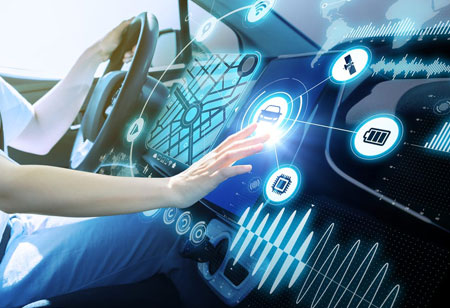The development of neural networks to utilize past driving data to train control systems has made autonomous vehicles safer for users as well as pedestrians.
FREMONT, CA – It has not been more than a couple of years since the autonomous vehicle incident made the headlines in Arizona. A woman was walking outside the crosswalk when the self-driving car hit the woman, who drew her last breath in the hospital. The incident caused the transportation service company to discontinue its autonomous vehicle services.
Recently, a group of researchers from Stanford University discovered a novel approach of controlling autonomous vehicles by leveraging the prior driving experiences, which will enable the cars to perform safely in extreme conditions. The researchers tested Stanford’s autonomous cars, Niki, a Volkswagen GTI and Shelley, an Audi TTS to their limits of friction. The results showed that the vehicles performed as good as an experienced racecar driver.
The project aims to promote autonomous vehicle safety in varied conditions, including high-friction asphalt and low-friction ice and snow. The algorithms are written to control the vehicles with the ability and skill of a racetrack driver. Currently, autonomous vehicles leverage in-the-moment assessments of their surroundings. However, the control systems developed by the researchers incorporate data from recent maneuvers as well as past driving data.
The control systems utilize information regarding the road-tire friction to determine the brake force, acceleration and steering to control the vehicle in critical conditions. The vehicle control systems need access to the relevant data about the road conditions for it to take the appropriate decisions during emergency conditions.
The researchers leveraged robust neural networks to build a resilient and responsive control system, which utilized driving experience data and the foundational knowledge collected from 200,000 physics-based trajectories. The incorporation of data-driven techniques with fundamental physics validated the neural network model.
Although the test showed outstanding results, the neural network systems might not perform as well in conditions it has not experienced yet. However, by incorporating the vehicles with self-training capabilities using the data generated by the autonomous cars can enable the vehicles to perform in a wider range of conditions. The autonomous vehicles on the roads produce an abundance of data related to different situations, and this can be used to build robust control systems that can eventually make the autonomous vehicles safer for the users as well as pedestrians.

 Copyright © 2025 AutoTech Outlook. All Rights Reserved | Privacy Policy | Subscribe | Sitemap | About us | Feedback Policy | Editorial Policy
Copyright © 2025 AutoTech Outlook. All Rights Reserved | Privacy Policy | Subscribe | Sitemap | About us | Feedback Policy | Editorial Policy